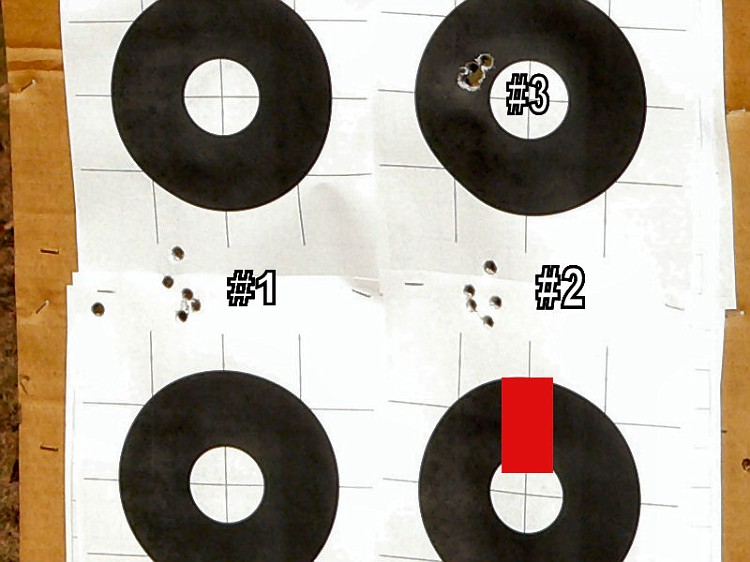Part-1 The Vetterli Rifle
It all started a couple of years ago when I bought a couple of really interesting Swiss rifles.
I collect interesting guns, sporters or military, and the Swiss Vetterli riles fall into both categories, interesting and military. It didn't hurt that they were also very reasonably priced.
The first was an 1869/71 model that I picked up from a dealer in Canada. The .41RF Vetterlis are regarded as antiques in most countries. The lack of restrictions and official paperwork was refreshing. I sent a MO and the seller mailed the gun to me, way cool!
Sometime later, I was wandering around the gun show in Springfield and spotted another Vetterli looking for a home. It was a very nice Model 1878/81, completely surrounded on the table by Garands. This is a sure sign of good hunting for serious bargain hunters.
Vetterlis tend to be reasonably priced because they are old, funny looking, and they fire a cartridge, the 10.4x38mm rimfire, that has not been available for about 80 years. The good news is that the bores tend to be very nice and the rifles are generally in good shape after a near-century as wall hangers. A large number of these rifles were "buba'd" into rather ugly sporters and sold by Sears & Roebuck and other arms merchants in the early 1900's. Fortunately, most were not subject to this fate.
Here is a photo of my 1878/81 rifle:

1878/81 Vetterli Specifications from Swissrifles.com:
Barrel Length: 33.5 inches
Overall Length: 52 inches
Weight: 10.19 lbs empty
Chambering: 10.4x38 (.41) Swiss Rimfire
Rifling: 4 groove, RH twist, 1 in 26"
Velocity: 1425 fps
Capacity: 13 (12 round tube magazine +1 in the cartridge elevator)
Total Production: 37,010 Model 1878/81s
Link to page about vetterli rifles:
http://www.swissrifles.com/vetterli/
There is something that draws me to old guns. The early breechloaders are examples of a very interesting and brief period between muzzleloaders and machine guns. The last fifty years of the nineteenth century began with the invention of the first self contained rimfire cartridge and ended with the development of the modern self-loading rifle and the first machine guns.
The development of the Vetterli rifle took place from 1869 to 1881. It was the first repeating cartridge rifle adopted by any modern army. The Swiss were a decade ahead of the rest of the world's armies with a reasonably powerful, large capacity repeating rifle.
Jack
It all started a couple of years ago when I bought a couple of really interesting Swiss rifles.
I collect interesting guns, sporters or military, and the Swiss Vetterli riles fall into both categories, interesting and military. It didn't hurt that they were also very reasonably priced.
The first was an 1869/71 model that I picked up from a dealer in Canada. The .41RF Vetterlis are regarded as antiques in most countries. The lack of restrictions and official paperwork was refreshing. I sent a MO and the seller mailed the gun to me, way cool!
Sometime later, I was wandering around the gun show in Springfield and spotted another Vetterli looking for a home. It was a very nice Model 1878/81, completely surrounded on the table by Garands. This is a sure sign of good hunting for serious bargain hunters.
Vetterlis tend to be reasonably priced because they are old, funny looking, and they fire a cartridge, the 10.4x38mm rimfire, that has not been available for about 80 years. The good news is that the bores tend to be very nice and the rifles are generally in good shape after a near-century as wall hangers. A large number of these rifles were "buba'd" into rather ugly sporters and sold by Sears & Roebuck and other arms merchants in the early 1900's. Fortunately, most were not subject to this fate.
Here is a photo of my 1878/81 rifle:

1878/81 Vetterli Specifications from Swissrifles.com:
Barrel Length: 33.5 inches
Overall Length: 52 inches
Weight: 10.19 lbs empty
Chambering: 10.4x38 (.41) Swiss Rimfire
Rifling: 4 groove, RH twist, 1 in 26"
Velocity: 1425 fps
Capacity: 13 (12 round tube magazine +1 in the cartridge elevator)
Total Production: 37,010 Model 1878/81s
Link to page about vetterli rifles:
http://www.swissrifles.com/vetterli/
There is something that draws me to old guns. The early breechloaders are examples of a very interesting and brief period between muzzleloaders and machine guns. The last fifty years of the nineteenth century began with the invention of the first self contained rimfire cartridge and ended with the development of the modern self-loading rifle and the first machine guns.
The development of the Vetterli rifle took place from 1869 to 1881. It was the first repeating cartridge rifle adopted by any modern army. The Swiss were a decade ahead of the rest of the world's armies with a reasonably powerful, large capacity repeating rifle.
Jack
Last edited:









![Thinking [thinking] [thinking]](/xen/styles/default/xenforo/smilies.vb/010.gif) )
)![Smile [smile] [smile]](/xen/styles/default/xenforo/smilies.vb/001.gif)
![Devil [devil] [devil]](/xen/styles/default/xenforo/smilies.vb/015.gif)

